Coprinellus micaceus is an edible gilled fungi (Agaricales). Its synonyms include glistening inkcap and mica cap. Mica caps are among the easily identifiable inky caps. You often spot them clustered together on buried wood or stumps. They have a reddish-brown color with mica-like granules.
This edible mushroom is saprobic, meaning they make energy from dead matter. The young specimens are decorated with shiny mica-like granules, the remains of the universal veil that covered them when popping up from the ground.
Based on the uniqueness of the C. micaceus that stands out, foraging is easy.
How Do You Identify Mica Caps?
- Cap:
- Mica caps typically have a conical to bell-shaped cap. When young, the cap is tightly closed and may appear egg-shaped. As it matures, it opens up, becoming bell-shaped. The cap is covered with mica-like or shiny granules, giving it a recognizable appearance.
- Cap Color:
- Initially, the cap is white or light cream in color when young. As it matures, it turns light brown. The cap is often slightly sticky or tacky, especially when moist.
- Gills:
- The gills are initially white but turn black as the mushroom matures. The gills are free from the stem, meaning they do not attach to it.
- Stem:
- The stem is slender, cylindrical, and often hollow. It is white or pale in color and may have a slightly fibrous texture.
- Spore Print:
- The spore print of mica caps is black.
- Autodigestion Process:
- An important feature of mica caps is their autodigestion process. As the mushroom matures, the cap begins to dissolve into an inky substance, starting from the edges and progressing toward the center. Harvest mica caps before this process begins.
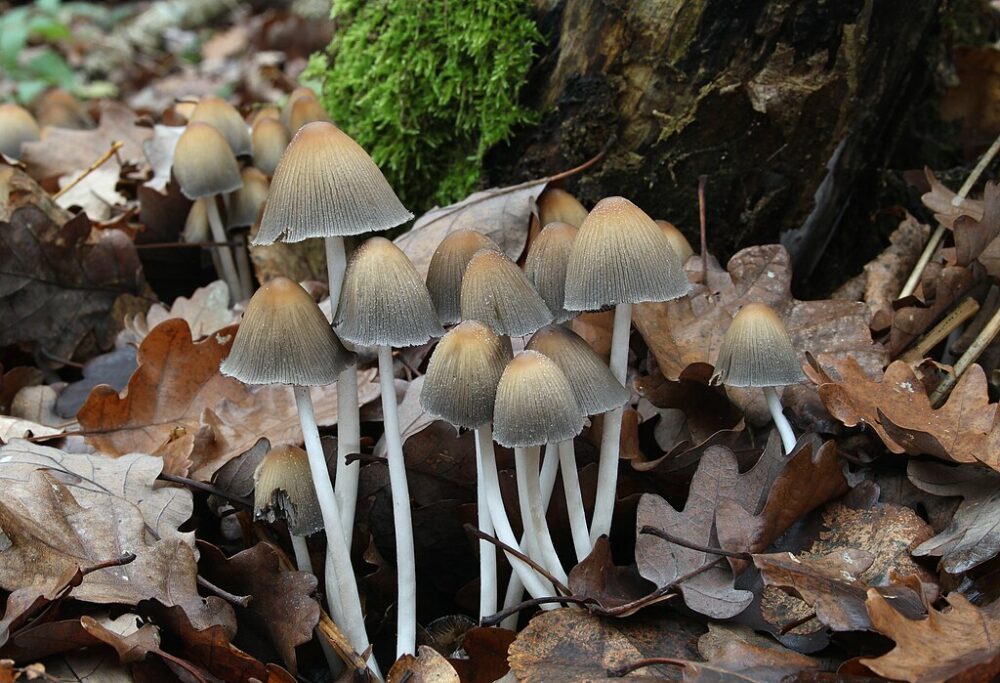
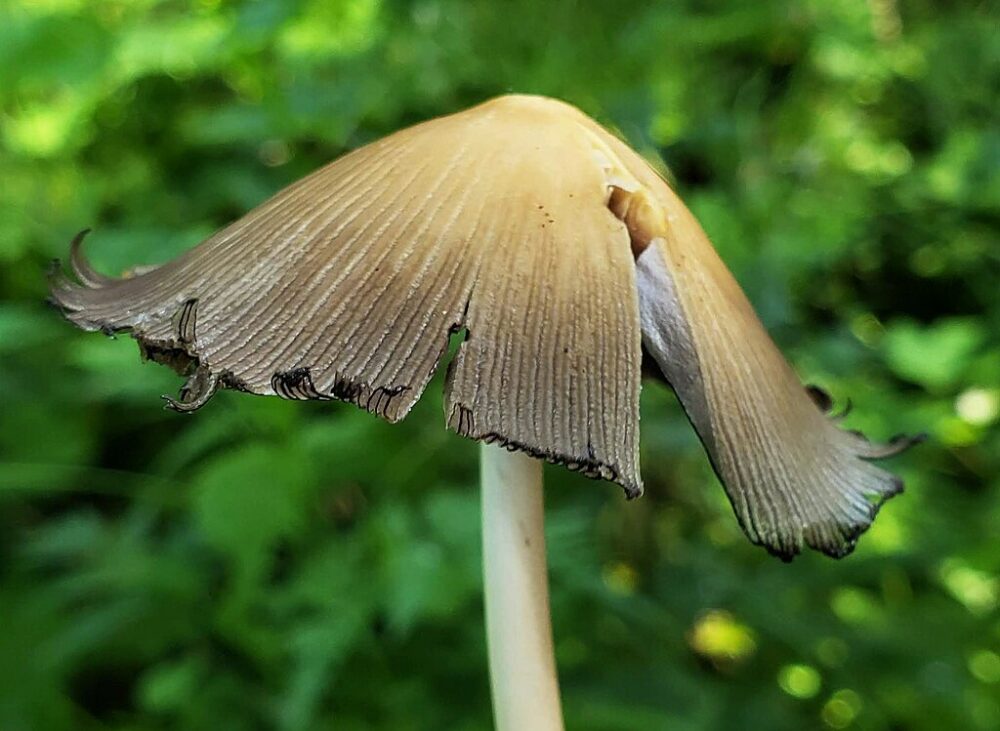
What Are You Foraging For Right Now?
We're thrilled to hear your ideas. What would you like to submit today? Feel free to share your thoughts and experiences with us.
Is Mica Cap Edible?
Mica caps are edible. However, it’s important to harvest them when they are young and before the cap starts to auto-digest and turn into an inky substance.
Experts suggest not to eat mica caps you find on the roadside or in locations exposed to pollutants since these mushrooms usually bioaccumulate harmful heavy metals like cadmium and lead.
Can You Eat Mica Caps Raw?
No, you should not.
Eating wild mushrooms raw carries the risk of ingesting toxic compounds. Cooking can help neutralize or eliminate certain toxins that may be present in raw mushrooms.
Watch our video to learn all about how to find, forage, and identify mica caps!
What Do Mica Caps Taste Like?
The taste of Mica Caps is often described as nutty or almond-like. When cooked, they take on a tender texture.
Where Do Mica Caps Grow?
Mica caps often grow on decaying wood, such as fallen logs, stumps, or buried wood debris. They are especially fond of hardwoods but can also be found on coniferous wood.
Mica caps will consume the host tree’s bark, specifically the secondary phloem, rather than the wood itself. Coprinus micaceus is a “late colonizer” in the chain of fungi that breaks down wood. It prefers to eat wood broken down enough to be “friably softened.”
According to studies, the fungus may also exist as an endophyte, meaning it can occupy a healthy tree’s woody tissues without triggering disease signs.
The fungus also grows around paths, roads, construction sites, parking lot edges, and gardens.
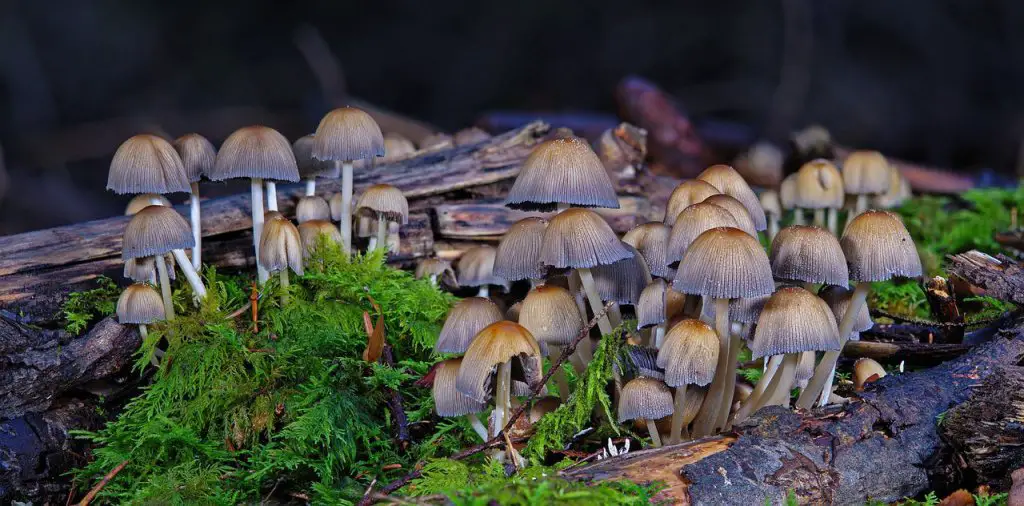
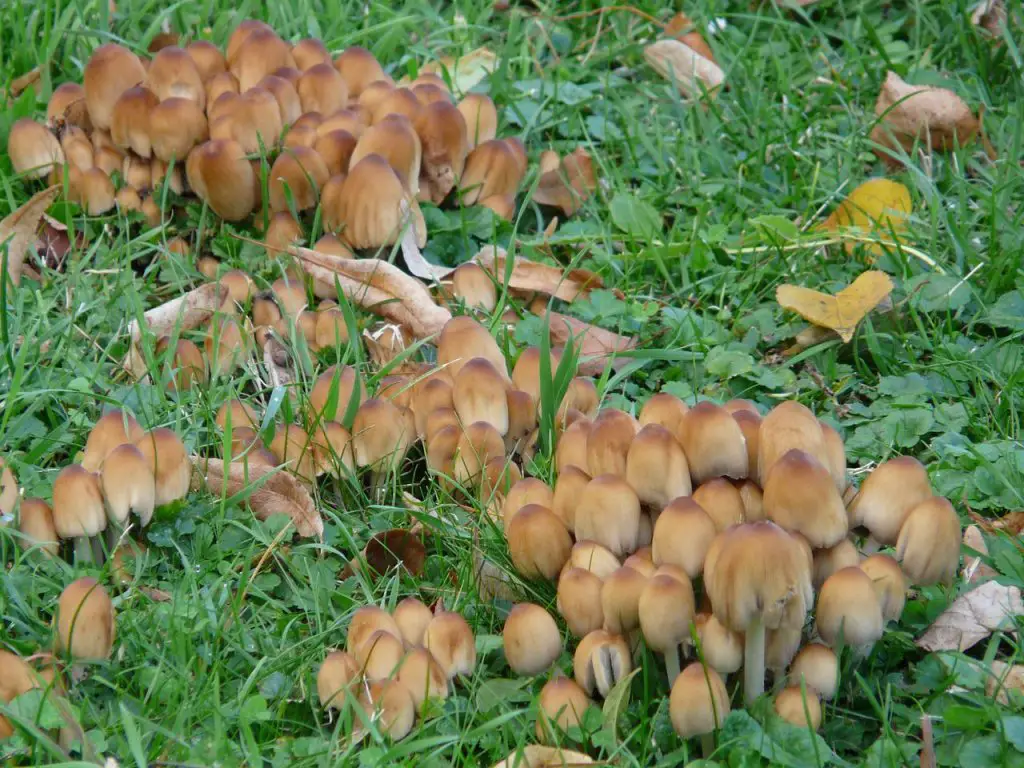
When is the Best Time to Harvest Mica Caps?
Late spring through summer is a prime time for mica caps, although, they continue to be visible in the fall.
Harvest mica caps when the caps are still tightly closed or just beginning to open.
How Should Mica Caps Be Cooked?
Minimal Seasoning: Mica caps have a delicate flavor, so use minimal seasoning to allow their natural taste to shine. Salt, pepper, and a touch of herbs or garlic can enhance without overpowering.
Quick Cooking: Mica caps have a tender texture, and they cook quickly. Use high heat for short durations, such as sautéing or stir-frying, to preserve their crispness and prevent them from becoming mushy.
Texture Contrast: Their slight crunch when cooked properly can provide an interesting element, especially in salads, pasta, or rice dishes.
Creative Plating: Use mica caps for creative plating. Their shiny granules can add visual interest to a dish, making it more appealing.
Are There Toxic Look-Alikes to Mica Caps?
One notable mushroom that can be mistaken for mica caps is the inky cap mushroom (Coprinopsis atramentaria), especially when it is in its early stages.
The inky cap mushroom is also edible when consumed without alcohol. However, it becomes toxic when ingested with alcohol. Consuming alcohol within a few days before or after consuming inky caps can lead to a toxic reaction known as “disulfiram-like syndrome.” Symptoms may include nausea, vomiting, flushing, and other discomfort.
To distinguish between mica caps and potentially toxic inky caps, consider the following differences:
- Gill Color:
- Mica caps have white gills that turn black as they mature. Inky caps have gills that are initially white but turn black as the mushroom matures and autodigests.
- Cap Surface:
- Mica caps have a distinctive cap surface covered with mica-like granules, giving them a shiny appearance. Inky Caps have a smooth cap surface.
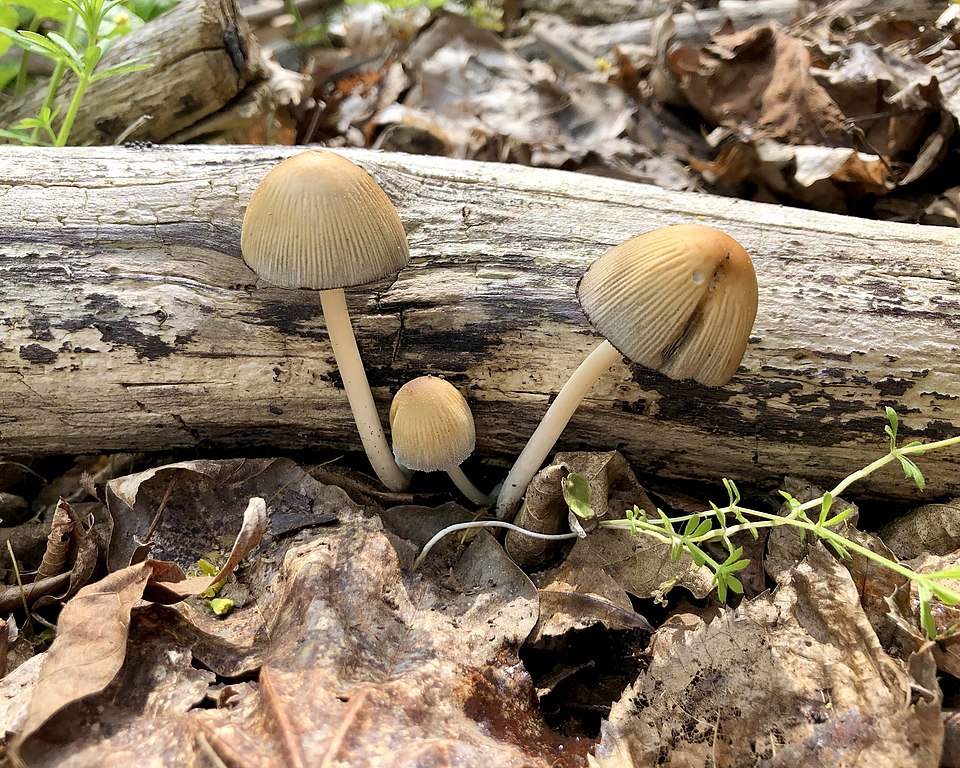

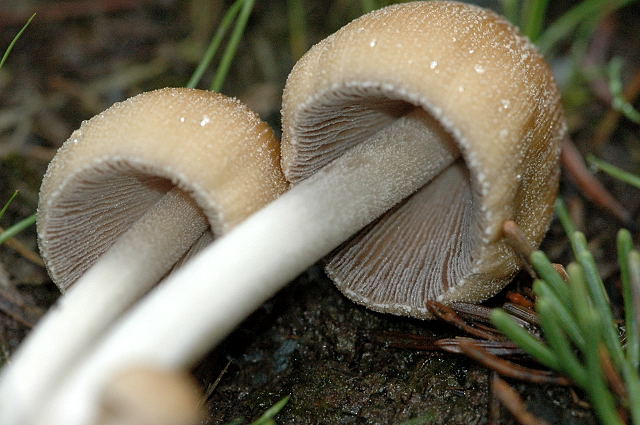

Why foragers like mica caps?
- Mica caps are relatively common and can be found in a variety of locations, including woodlands, gardens, and urban areas. Their widespread distribution makes them accessible to foragers in different regions.
- Their distinct appearance makes them a recognizable and interesting find.
- While mica caps usually grow in late spring to fall, they can be found year-round. This extended availability provides foragers with opportunities to enjoy their hobby throughout the seasons.
Check our guide on candy cap mushrooms, a unique and flavorful species known for their sweet, maple syrup-like aroma.
Lorin is a writer, photographer and nature enthusiast in Sacramento, CA. In addition to gardening, she makes a regular practice of forging for edible plants and flowers. Nature nourishes if you know where to look.

